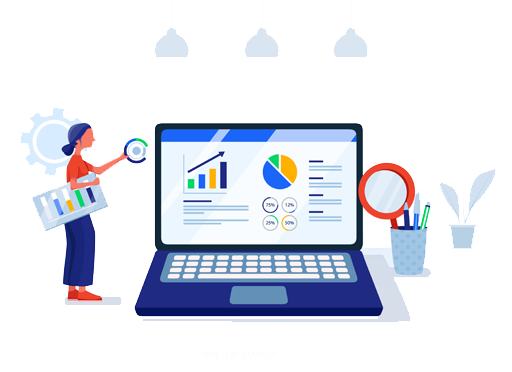Digital Marketing: Seizing the Opportunity to Market Your Brand Online
“Marketers need to build digital relationships and reputation before closing a sale.” –Chris Brogan
The world will never be the same again. Both the Fourth Industrial Revolution and the COVID-19 pandemic are driving rapid change to the way we live. And, even though the coronavirus pandemic will die out, the chances that the world will revert to the way it was before the end of 2019 is minimal.
And, as global netizens, we have the choice to see the current worldwide upheaval as a threat or as an opportunity. While considering the past, present, and future, the answer to the unasked question of whether to face the future with fear, or whether to embrace the opportunity, is to grab the moment with both hands and move confidently into the future.
In other words, the age-old adage of “Carp Diem” or “Seize the Day” is relevant here.
About This Post
How helpful is this?
Average rating 5 / 5. Vote count: 12
No votes so far! Be the first to rate this post.

Also, because everyone is working from home, global businesses are embracing the change by moving online. Consequently, the parallel stream of digital marketing best practices is growing in prominence because brand marketers need to market their brands’ products and services. Therefore, the question that begs is, how do you gain a competitive edge by implementing digital or online marketing best practices?
Before we answer this question, by looking at ways to market your company’s products and services online, let’s consider a succinct definition of the Fourth Industrial Revolution (4IR, or Industry 4.0) as well as that of digital marketing.
The Fourth Industrial Revolution: Paving the way for the future

It isn’t easy to jump from a predominantly farming lifestyle in the early eighteenth century to the twenty-first century, where technologies such as robotics, autonomous vehicles, the Internet of Things (IoT), and the Internet rule our lives. However, industrialization, coupled with technological developments, have carried the world from the first industrial revolution to where we are now in the twenty-first century.
Klaus Schwab, the chief executive officer and founder of the World Economic Forum, noted that “previous industrial revolutions liberated humankind from animal power, made mass production possible and brought digital capabilities to billions of people.”
However, he believes that 4IR is different. In his book, titled The Fourth Industrial Revolution, he stated that there is “evidence of dramatic change… all …around us, and it’s happening at exponential speed.” Additionally, Industry 4.0 is capable of “impacting all disciplines, economies and industries, and even challenging ideas about what it means to be human.”
Digital marketing
Digital marketing: Setting the scene
Before we consider the answer to this question, let’s set the scene by looking at a brief history of the Internet or the World Wide Web as well as some of the Internet or online statistics.

Digital marketing components
Now that we have a comprehensive understanding of digital marketing and its associated drivers, such as the technical advances that are facilitating the consumption of digital marketing material, as well as the socioeconomic environment that is driving the need for digital marketing, let’s consider several of the more critical components and what each element’s unique purpose is within the overarching digital marketing strategy.
Persona types and keyword analysis
Every brand has a target audience. It is part of the raison d’etre for a company’s existence. Therefore, as part of the business development process, you should have developed a virtual persona type for everyone who might form part of your brand’s target audience.
Let’s assume for this discussion that you own a startup that sells organic, homemade pet food for dogs. Consequently, to decide who is your brand’s target audience, you need to ask the following questions. It is vital to note that a brand will have more than one persona type. So, you’ll have to develop several persona types to determine your target audience, using the same questions.
- Does the person own a dog?
- Is the person male or female?
- Geolocation: Where does the person live?
- How old is the dog?
- What breed is the dog?
- What does the dog weight, and what should the dog weigh?
- How many times a day does the dog get fed – once, twice, or three times a day
Secondly, once you have drawn up all the different persona types, the next point to consider is keyword analysis. In other words, what keywords are related to the brand and its target audience.
It is essential to note the following about keyword analysis:
It must occur after the persona-type development phase, as many of the applicable keywords are directly linked to the different components of the target audience. As an aside, you’ll find relevant keywords in the persona-type questions and answers.
Secondly, as the brand grows, both the keyword analysis and the persona-type development processes are reiterative and cyclical in nature. If you don’t repeat this exercise regularly, you will lose the chance to drive growth to your brand by not connecting with a part of the brand’s target audience.
Website

Your brand’s website is the window into your business. It is comparable with the front window of a retail store. Consequently, it must be well-designed, eye-catching, meets usability (UX) and user-friendly (UI) best practices, and the navigation path to the Call-To-Action (CTA) is obvious and easy to follow.
The web copy must be relevant to the brand, include anchor texts or keywords derived in the keyword analysis phase of the development of a successful digital marketing strategy. In summary, there must be a synergistic approach to what keywords are used across all digital marketing channels. Otherwise, brand trust and brand loyalty will not occur in the eyes of your target audience.
The lack of brand trust and loyalty will have disastrous consequences because consumers will not purchase your products because they do not trust your brand. Therefore, you cannot expect anyone to be loyal to your brand.
Search Engine Optimization (SEO)
Searchengineland.com defines SEO as the “process of getting traffic from the free, organic, editorial, or natural search results on search engines.”
Google and other search engines use search and ranking algorithms as well as web spiders to crawl through every website available on the World Wide Web to form an index of every web page. Web pages are linked together by using URLs (Uniform Resource Indicators) or web addresses. Web pages and websites are also ranked by the perceived value that Google attributes to each page and site. Thus, when a user searches for a specific phrase or keyword, Google returns the websites that are the most relevant.
If we return to our example of the pet food company highlighted above, let’s assume that you are a dog owner who is passionate about feeding organic food. You do not like the concept of mass-produced, dry kibble, so you are looking for homemade, organic cooked food to feed your dog. As an aside, but equally importantly, your dog is a Belgium Shepherd Malinois who is also your running companion. This information is essential to the brand owners because it shows what dog food you are interested in purchasing.

Therefore, you will probably google something along the lines of “homemade organic dog food near me.” Google will return a list of companies in your geographic location who manufacture the dog food you are looking for. It is worth noting that the results returned will be somewhat generic. Therefore, should you wish to search for a specific diet for your dog’s breed, you’ll probably enter the following search phrase: “homemade organic dog food for Belgian Shepherd Malinois.” Google will then return the brands that have specified this keyword phrase on their websites.
Thus, a good SEO strategy will ensure that your brand will rank on the Search Engine Results Page (SERP) for all the brand-specific keywords and keyword phrases.
Content writing and content marketing
Why?
The concise answer to this question is that “content is king.” And, without great content, a website will not rank in the top three to five results on the SERP. Google’s ranking algorithms rank content based on its relevance, authority, richness, and grammatically correctness. How?
Well, Google’s latest artificial intelligence and machine learning algorithms are now able to determine whether an article or blog post is relevant to the topic and the linking keywords. They can also determine whether a native English speaker writes an article or whether it is spun, or written by a bot who scrapes content from existing websites and arranges it in a new article. Spun content is generally of inferior quality, and Google will penalize or punish any site that they think is publishing spun content.
Consequently, it is essential to ensure that any content that is linked to your brand’s online presence in any way is of a very high standard.
Another crucial aspect of content marketing is what is known as backlink building. Moz.com defines link building as the “process of acquiring hyperlinks from other websites to your own.”
Because every document on the World Wide Web is linked to another document via an address or URL, and because Google uses web spiders to crawl through every website and index each page, it is vital to generate organic (not paid) links to your website.
These backlinks must also have their own authority or link juice because Google attributes the linking site’s authority to your link and will rank your website based on the linking site’s authority. This concept can go both ways. If your site links to a poor-quality, spammy site, Google will attribute the poor quality, spammy link’s value to your site. Consequently, your site’s ranking will more than likely drop in relation to its competitors.
On the other hand, if your site links to a high-quality, authoritative site in its niche, your site’s value will increase, and its ranking on the SERP will improve.
Social media marketing

- 42% of the global population accesses at least one social media platform like Facebook, Twitter, Instagram, Snap Chat, and Pinterest. Ergo, about 90% of Millennials, 48.2% of Baby Boomers, and more than 77% of Generation X are on social media.
- Everyone spends at least 120 minutes (2 hours) every day on social media.
- 54% of users research products and services on one or more social media platforms.
Additionally, many brands are finding that they have to attend to customer service queries on social media. The value of using social media as a means to communicate with your user base is that you can communicate directly with consumers through platforms like Facebook Messenger, WhatsApp, and Instagram Messenger. Not only does this allow you to talk directly with consumers, but it also provides a unique opportunity to provide superior customer service with a quick turnaround time to customer queries, complaints, and requests.
Top digital marketing tips
Implement an agile strategy

Social media is also changing rapidly, with new platforms being released regularly. And, existing platforms like Facebook, Instagram, Pinterest, and Twitter are happening almost every month.
Therefore, it is best to plan and implement incremental digital marketing strategy iterations with regular reviews (three to six monthly reviews) to determine whether a campaign is working or not. Your marketing campaigns must evolve based on the outcomes of these reviews.
Measure key benchmarks
Setting up Key Performance Indicators for every digital marketing campaign you design and implement is a critical part of the overall strategy. Without stating the measurable outcomes at the start of the process, you will set your marketing strategy up for failure before you start.
Therefore, the question that begs is, how do you measure success?

By way of answering this question, the benchmarks or KPIs that must be measured include:
- Cost per lead
- Cost per campaign
- Number of returning visitors
- Number of unique visitors
- Sales revenue per customer
- Overall sales revenue
- Clickthrough rates
- Conversion rates
- Website navigation path
- Website bounce rate
- Brand awareness metrics
- The consistency of the brand voice
- The number of website traffic leads
Analyze your competitors
Studying your competitor’s digital marketing strategies is a key aspect of a successful marketing strategy.
Why?
Because, if you are not monitoring your competition’s digital media strategy, you are losing out on an opportunity to gain a competitive edge. You can also learn from what they are doing wrong. Elements you can look at include target keywords, website usability and user-friendliness, social media posts, and paid advert types.
As an aside, it’s not a good idea to click on your competition’s PPC ads as they pay for every time an Internet user clicks on one of their ads.
Finally, keeping an eye on your competitors reduces the risk that they will catch up and overtake you. It also ensures that your marketing strategies remain fresh, innovative, and relevant to your brand’s target audience.
Final thoughts:
The topic “everything digital marketing” is substantial, and one cannot do it justice in one blog post. Therefore, click here should you wish to know more about the Digital Marketing Practitioner Certificate Program offered in partnership with S N Chatterjee and with BDN Groups’ collaboration.
